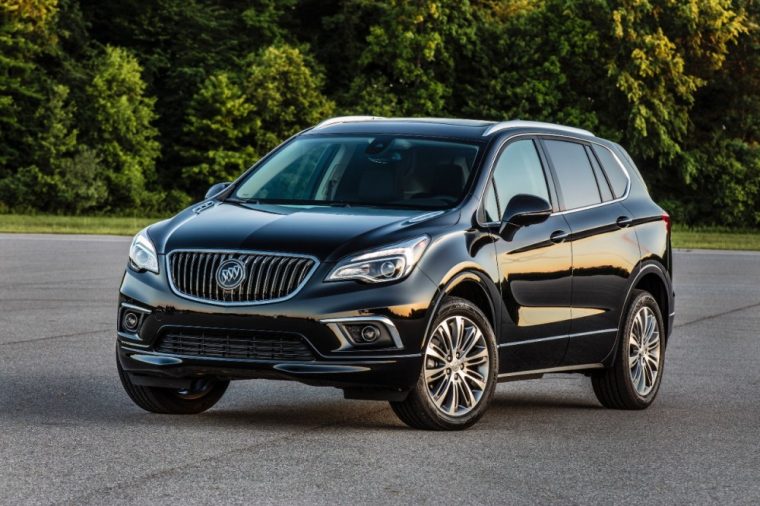Sales of Chinese-Built Buick Envision Continue to Trend Upward
It’s somewhat surprising that vile pigman and Republican presidential nominee Donald Trump hasn’t made a more concerted effort to target General Motors in the same way that he has gone after Ford during his interminable, obnoxious campaign. Apart from the one time where he called them out in a press release and then didn’t, he hasn’t so much as mentioned GM, never mind make audacious claims about it firing all of its US employees.
Like Ford, GM not only manufactures vehicles all over the world, but builds vehicles in Mexico that are exported to the United States—for example, Ramos Arizpe Assembly plant builds both the Chevrolet Sonic and Cruze, and until recently, was the manufacturing hub for the Cadillac SRX. Numerous other vehicles are built around the world and exported to the United States, which seems pretty typical for a multinational corporation whose products are sold pretty much everywhere.
GM theoretically would have made itself an even larger target for Trump’s insipid rhetoric by importing the Buick Envision from China, making the crossover only the second vehicle to be built in China and sold in the United States. This, of course, led to the requisite talk of American automotive manufacturing drying up for cheaper labor, and the UAW called the decision “tone-deaf” and a “slap in the face to US taxpayers.” Maybe that last bit is why it doesn’t offend The Donald so much; perhaps he would care if it were also a “slap in the face to shrimp-fingered dumpster fires who gloat about not paying taxes and groping women.”
But as The Wall Street Journal points out, consumers seem to have adopted the Envision with fairly little resistance. Since bowing in May with sales totaling 89 units, the Envision has posted impressive totals of 1,437 units in June, 1,421 units in July, 1,531 units in August, and 1,648 units in September. With the popularity of crossovers seemingly only increasing, this number is likely going to continue to increase as well. This indicates that, perhaps, the American consumer is not as concerned about products being American-made as years of jingoistic chest-thumping from the likes of Trump might suggest.
The Envision’s popularity in China—where Buick sold approximately 150,000 Envisions in 2015 and stands to sell more than 200,000 in 2016—necessitates domestic production. Even if sales of the Envision top 2,000 units and maintain that pace for a full year in the United States, that would still only add up to about 12.5% of its volume in China. That fact alone makes it difficult to make a business case for building the Envision in the United States in addition to its production in China.
Moreover, sales of the Envision are almost microscopic in the scheme of GM’s monthly volume in the United States. To give you an idea of how small, consider that GM sold 249,795 vehicles in the United States last month; the Envision’s 1,648 sales represent just 0.66% of that volume. Even if the bulk of Buick vehicles are produced in Europe and China by the end of 2017, as is the speculation, Buick sales represent less than 10% of GM sales in the United States.
Certainly, there is a not insignificant number of vehicles being built elsewhere and sold in America, but it is not quite indicative of automakers like GM shedding jobs in the United States and fleeing to other countries (where, not for nothing, they are also obligated as multinational corporations to stimulate local economy and create jobs). If anything, the trend seems to be that GM and other automakers will increase its presence in the United States while simultaneously investing in other countries, which is a win-win for everyone as long as the industry remains on the upswing.
Should the Envision become such a hot item that it demands localized production in the United States, it will be done. That’s not necessarily favoritism or profiteering so much as it’s just the way the business works. And until such a time where consumers indicate that they will not pay $40,000 or more for a vehicle built in China, GM will continue to do business the way it sees fit.
News Source: The Wall Street Journal
Kyle S. Johnson lives in Cincinnati, a city known by many as “the Cincinnati of Southwest Ohio.” He enjoys professional wrestling, Halloween, and also other things. He has been writing for a while, and he plans to continue to write well into the future. See more articles by Kyle.


